When you take a walk in the town of Paks, you must visit the Church of the Holy Spirit, or as most people know the Makovecz church. Going along the Újtemplom street and arrive to the bottom of the residental area, we can sight the unique bell tower of the church with the tree sightly peak from far away. On the center peak, which is the highest point of the church with 34 meters, there is a classical cross symbol, while a gold sun and a silver moon is located in the two other peak. The roman catholic church, which was sacrified to the Holy Spirit and designed by Imre Makovecz stand on the Hősök square. The fascinating building is one of the most significant work of the organic architecture of the 20th century. The church made a reputation for the town and also the architect with its willowly and peaky rooftop, cambered gate and its unique style. The architect integrated the ancient symbol and the hungarian symbols of form and belief with the christian traditions.
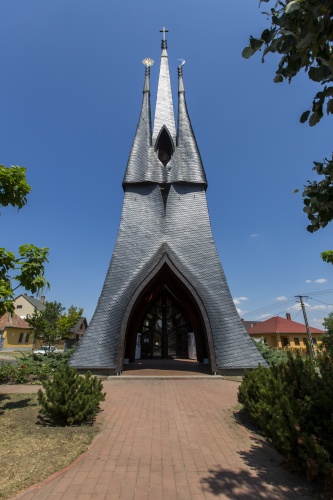
Approaching the church and pass country family houses lots of questions can come up. Why the church was built here and not in the top of the hill, closer to the tulip houses? What happened that time? If we examine the history of the church, we get the answers to these questions.
In 1987, the roman catholic church laid a charge on planning the church. In Pentecost of 1988 the deposition of the foundation-stone had happened, and later in 3th of june 1990, on Whit Sunday the diocesan of Pécs sanctified the church. This was the first time when the church bell, scale of almost three quintal, was tolled.
Christmas of 1991, the church (together with the church garden) was completed with its 361 square metre place, capacity of 300 people.
The little church even though its size, it looks like monumental. If we walk around the church, we have a special scenery from every aspect. Around the nave of the church there is a bank from earth, thanks to that, we have the impression like the building is outgrew from the earth. If we look the nave from outside, it reminds us an upside down boat, while the back side of the building looks like a face with two giant eyes. The belltower with three peaks stands separately in front of the building. Next to the entrance there are two angels, one in each side, the angel of light and the angel of darkness. Under the tower we arrive to the entrace of the nave. If we enter we get a special experience, thanks to the light, which is coming through the hearth shape glass roof and the cambered wooden beams. Under the cambered warm wood structure, hidden by „yurts” there is the baptismal font. Because of this, we have a strange feeling that we are surrounded by ribs. In space there is a white stone altar in the place of the hearth, behind the altar angels with spread wings escort the resurrecting Jesus Christ towards the light. The place of the altar has the highest headroom. The attention is managed to the altar by the benches placed next to each other in acute angle. As Imre Makovecz said about the main idea of the church’s configuration: „The building is a spacial form of an ancient symbol. This symbol (S) is the main symbol of the hungarian folk art, but it can be also found in many areas of Eurasia, and places once inhabited by Celts and Scythians. The ground plan is composed of two symmetrical S symbol. The two symbols are congruent, but because of the contradictory position, it refers to the contrast of light and darkness, male and female, Sun and Moon, in fact the opposite of yin and yang, which are in dynamic balance with each other. This is the reason why there are a Sun and a Moon in the peaks of the tower, and also this is why the angel of darkness stands in one side and the angel of light stands in the other side of the church. The Androgyny of Jesus Christ has to be born from these opposites, his statue stands in the center of the church, above the altar.” The architect won an Ybl-award thanks to the modern use of vernacular architecture. He considers himself as an organic architect, he believes that there has to be a harmonious relationship between humans and buildings. His buildings resemble humans: they have eyes, eyebrows, noses and skulls.
Like other public buildings designed by Makovecz, this church was built according to the following principal: „What really matters are the people who will use the building whether they take a part in construction or not, what is happening under the time of construction, whether the energy of the community, their attention, their mind, their hope, their faith infiltrate into the building or not.” A building will not start to operate when it is done and people enter into, but when the thought of construction is raised.”
The institution was built by public subscription; from the donations of believers of Paks and other hungarians; german, swiss and austrian relief organizations and dioceses; among them the Roman Catholic Archdiocese of Munich and Freising, the Roman Catholic Diocese of Pécs, the State Office for Church Affairs, the Town of Paks and the Nuclear Power Plant of Paks. Inhabitants of Paks worked nearly 3000 workdays on the construction of the Holy Spirit Church without any payment. During construction, they used more than 200 stere of wooden materials. Components of the church arrived from many townships of the country: the wooden legs of the domes from Árpádtető near to Pécs, the eight columns and their masts from Sopron, the major cambered members from Csurgó in Somogy county, the minors from Dunabogdány, stonemasons of Kelenföld made the baptism fonts and candlesticks, and the altar’s material came from Siklós. The timber works were made by Sándor Nyíri carpenter of Fót and his associates, the glass works were made by János Varga glassman of Budapest, a stonemason of Paks Sándor Pupp smoothed the altar, a joiner of Paks István Kern made the church tabernacle, and the plans of the church’s installation was made by Gábor Mezei interior designer. Benches, chairs and the confessional were made from redwood by János Lendvai joiner of Nagydorog and Gábor Nagy joiner of Cece, and the organ was made by Péter Albert organ builder of Miskolc. Behind the church there is a square with a statue of Corpus, which is 5,5 meter high and 2,4 meter wide, was made by Ferenc Schmidt and János Jantner locksmiths, tinsmiths. The statue of the resurrected Christ and the two angels were made by László Péterffy sculptor, while the symbols of gifts of the Holy Spirit were made by Gizella Péterffy painter.
Previous check-in is needed:
Mihály Lednecki: +36 20 388 1532
Architecture students from London visit the Church of the Holy Spirit:
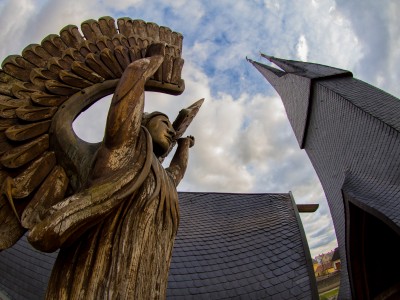
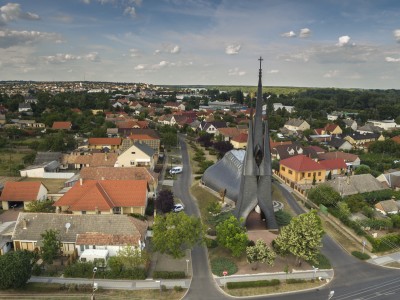
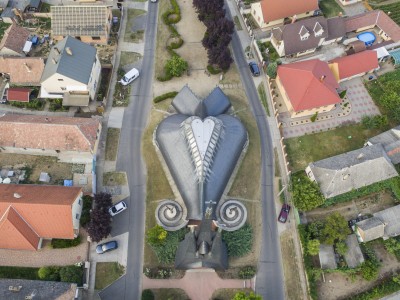
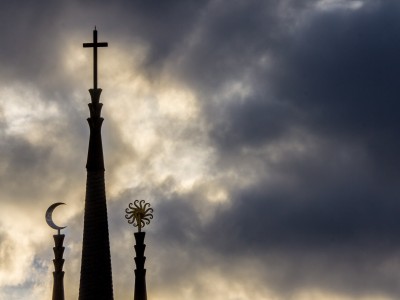
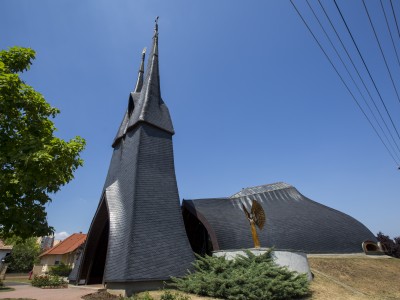
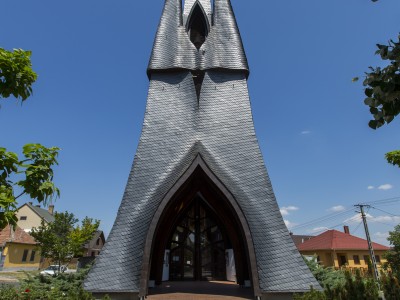
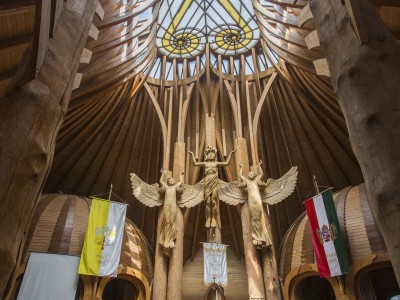
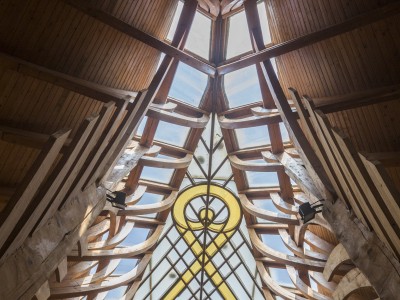
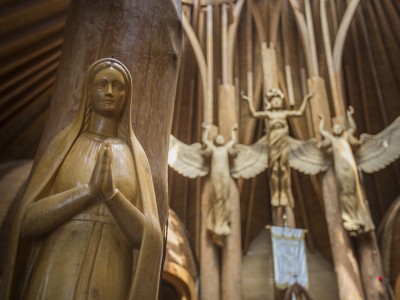
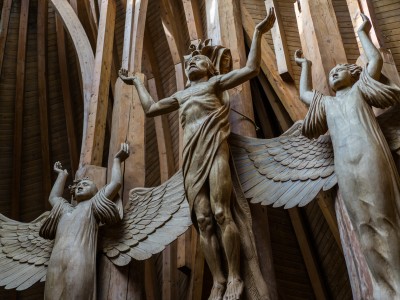
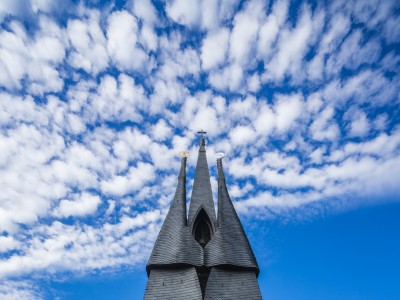
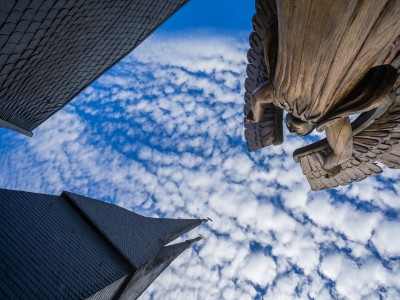
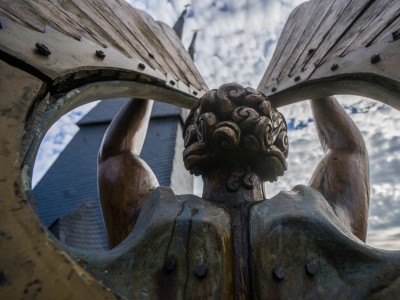

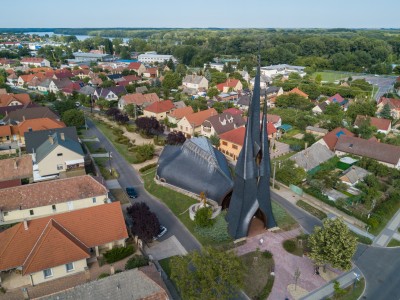
| Prebystery of Paks | |
| Address: | Szent István square 16., Paks, 7030 |
| Phone: | +36 (75) 510-566 |
| E-mail: | rkplebaniapaksgmail.com
|
| Website: | http://www.paksplebania.hu |
| Mihály Ledneczki | |
| sacristan | |
| Mobile phone: | +36 (20) 388-1532 |
| Church of the Holy Spirit | |
| Address: | 7030 Paks, Hősök square |

